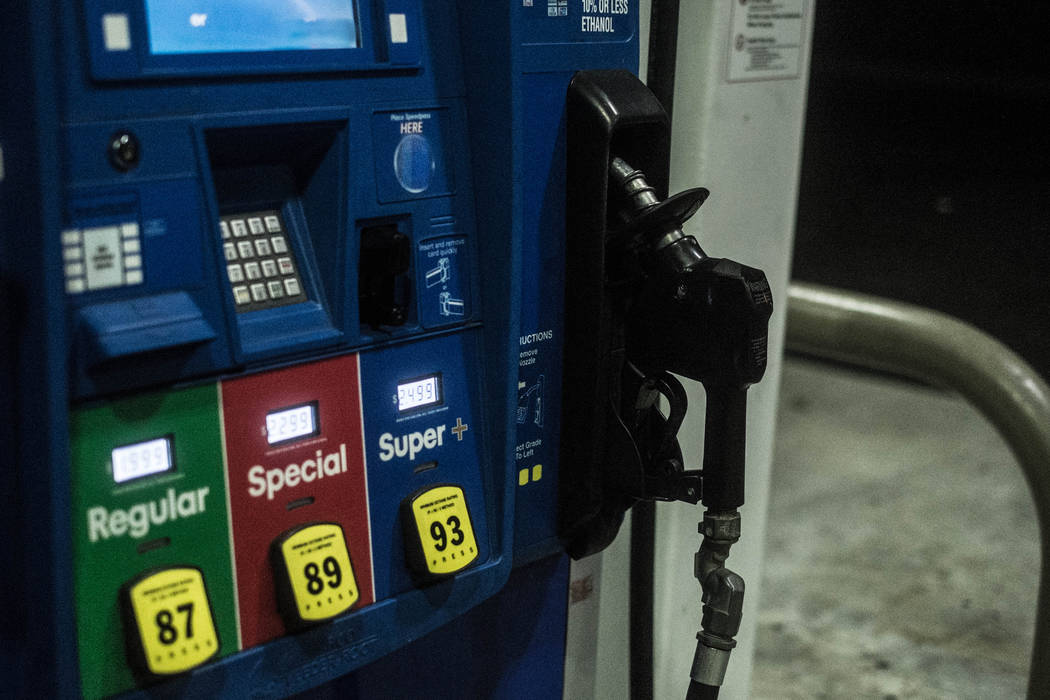
Despite an unseasonal spike in demand, according to the U.S. Energy Information Administration’s latest data sets, gas prices are decreasing for the majority of motorists across the country, AAA reported this week.
But Nevada’s gasoline prices are the third highest in the nation.
As of Monday, the national average gas price is $2.63, which is two cents less than last week and 26 cents cheaper than last year, but six-cents more expensive than last month.
“The national gas price average has been gradually decreasing the past three weeks and we expect this trend to continue, barring any major industry or geopolitical events,” Jeanette Casselano, AAA spokeswoman said via news release. “But the real savings we’re seeing is when prices are compared to this same time last year. Drivers in some states are paying 40 cents less per gallon than they were last October.”
The largest weekly volatility with gas prices continues to happen in West Coast states, but that could be tapering off, AAA said.
Most pump prices in the West Coast region have increased on the week. However, prices in the region appear to be stabilizing after a number of regional refineries experienced unplanned outages that reduced supply over the last few weeks.
California ($4.17) and Hawaii ($3.65) are the most expensive markets in the country. Nevada ($3.44), Washington ($3.35), Oregon ($3.26), Alaska ($3.01) and Arizona ($2.91) follow. Oregon (+10 cents) and Washington (+7 cents) saw the largest increases, while Hawaii (-2 cents) and California (-1 cent) saw the largest decreases.
In Pahrump, prices on Monday ranged from $2.99 to $3.15, a survey by gasbuddy.com showed. In Beatty, prices ranged from $3.28 to $3.44, and in Tonopah, the prices spanned from $3.48 to $3.53, the survey showed.
The administration’s report for the week ending Oct. 4, showed that total West Coast gasoline stocks decreased from 27 million barrels to 26.25 million barrels. This level is approximately 2 million barrels lower than this same time last year. Tighter supplies will continue to keep prices high this week, but as refineries resume normal gasoline production levels, pump prices are expected to stabilize, AAA said.
Crude prices increased last week after Iran announced that one of its oil tankers was struck, potentially by missiles, in the Red Sea on Friday. The incident adds to concerns that increased tension in the Middle East could lead to a disruption in global crude supply.
Crude prices also increased based on reports that OPEC and its partners could deepen production cuts next year in an effort to reduce supply, which would lead to higher prices. The current production reduction agreement is in effect until March 2020, but when OPEC and its partners meet on Dec. 5 and 6 in Vienna, the group could decide to deepen the cuts, AAA said.
Additionally, crude prices rose after the U.S. and China announced a partial trade agreement at the end of last week. However, if trade tensions return, alongside increased tension in the Middle East, crude prices could slip this week, AAA added.